I was in an apartment of some kind being chased by an FBI agent with a gun who turned out to be Condoleeza Rice (lol dont ask me why). Anyway, she chased me down the stairs of this apartment until I reached I dead end which turned out to be a small room with a toilet and a window which I couldn't get out of. Suddenly it came to me that I was dreaming and became lucid so I became invisible and drifted through the wall to see Condoleeza slowly approaching the room which I was in with her gun ready thinking I was still there, but I was right infront of her.
The hell with this, I thought, so I jumped throught the wall and starting flying (I've had flying dreams before where I was aware, but not completely in control and 100% lucid, so i knew what I was doing) and played around with my flying speed trying to go faster then ever before! So fast that it scared me a little =)
So I was pretty excited and getting all arrogant, I wanted to see what position my sleeping body was in. I felt my body and its position in the bed and shortly after that I woke up... happy to have my 1st completely lucid dream!
I will be writing about my experiences with Lucid Dreaming. I have been doing Lucid Dreaming for about 2 years and have many Dream Logs to share.
What is Lucid Dreaming?
The basic definition of lucid dreaming requires nothing more than becoming aware that you are dreaming. However, the quality of lucidity can vary greatly. When lucidity is at a high level, you are aware that everything experienced in the dream is occurring in your mind, that there is no real danger, and that you are asleep in bed and will awaken shortly. With low-level lucidity, you may be aware to a certain extent that you are dreaming, perhaps enough to fly or alter what you are doing, but not enough to realize that the people are dream representations, or that you can suffer no physical damage, or that you are actually in bed.
Wednesday, April 27, 2011
Friday, April 22, 2011
Dream Sex 102
So what do we really want with dream sex?
We really want connection, relationship, and a shared experience, even in our dreams! For many beginner lucid dreamers who are used to “abracadabra I can get whatever I want” this often means a difficult shift in perspective from grasping for gratification to connecting to our inner passions.
We really want connection, relationship, and a shared experience, even in our dreams! For many beginner lucid dreamers who are used to “abracadabra I can get whatever I want” this often means a difficult shift in perspective from grasping for gratification to connecting to our inner passions.
I don’t mean to suggest that you can’t be gratified. The opposite is true; remember that piece about how orgasms can be real? By focusing on relationships first and sensations second, many lucid opportunities will come your way. And once you make the shift, you will probably find that your waking life sexual relationships will become more fulfilling too.
Sacred Sexuality and Lucidity
 The erotic energies are very strong. Lucid dreaming is an altered state of consciousness, and the sexual energies in dream, trance, and visions have been explored for millennia by mystics, magis, and saints as a path to know the Divine. In fact, some of the earliest known paintings in the world, including the famous cave art of Lascaux, France, depict sexual ecstasy (note the erection of the bird-man).
The erotic energies are very strong. Lucid dreaming is an altered state of consciousness, and the sexual energies in dream, trance, and visions have been explored for millennia by mystics, magis, and saints as a path to know the Divine. In fact, some of the earliest known paintings in the world, including the famous cave art of Lascaux, France, depict sexual ecstasy (note the erection of the bird-man).In Christianity, the medieval mystics, such as Teresa of Avile and St. Catherine of Siena, explored sexual themes in their ecstatic trances. Taoism, Sufism, and Buddhism all have developed mental practices for sacred sexuality as well. Many of these ancient practices focus on cultivating sexual energy and then using it to purify the mind and the body.
Delving into lucid dreaming sexuality may have some unforeseen results due to the power of the erotic energies
All of this is to say that sexual energy is well known by consciousness explorers as having more value than scratching the pleasure centers of the brain. While getting closer to the Divine may not be your intention, it is helpful to know in advance that delving into lucid dreaming sexuality may have some unforeseen results due to the power of the erotic energies.
By the way, a classic book that is explores sexuality, spirituality and lucid dreams is Patricia Garfield’s Pathway to Ecstasy: The Way of the Dream Mandala . Highly recommended.
. Highly recommended.
Monday, April 18, 2011
The Carrot on the Stick
The Carrot on the String
Now that I’ve covered the basics of lucid dream sex, I’ll move on to the real trouble with using lucid dreaming to explore sexuality: the Carrot on the String.
How many times have you realized you are dreaming and then wasted no time finding a romantic partner to couple with, only to find that the would-be-lover walks away, transforms into someone who is not attractive, or becomes angry and menacing?
Maybe you disengage to find another partner, only for the process to repeat again, either by meeting resistance, disinterest, or bizarre character transformations that you couldn’t even tell your best friends about out of sheer embarrassment.
Just when what you want is in reach, something yanks the string and you are left grasping at air.
This is the “carrot on the string,” one of the greatest self-limiting constructs in lucid dreamwork. Just when what you want is in reach, something yanks the string and you are left grasping at air.
The reason this happens is because most of the time we do not really crave lucid dream sex, but sexual connection. Nor do we really want to “have” that attractive person. Long story short, once we stop treating our fantasy dream loves like objects (specifically: carrots) to have or possess, entire new worlds of possibility open up.
Saturday, April 16, 2011
Sexual Lucid Dreaming!
This is a topic that never goes out of style. Exploring sexuality safely within the confines of the dream world is one of the prime motivations for learning how to lucid dream. The promise of “exciting dream sex” is a marketing hotspot, so to speak, for beginning lucid dreaming guides, books, and dozens of dubious meditation CDs.
What these guides don’t tell you, of course, is how difficult it is to perfect the art of exploring erotic energy in dreams, and what the pitfalls are along the way.
Let’s start with a little question and answer about the basics and then move on to the possibilities of exploring sex and sensuality in dreams.
Q: Is it true that you can learn how to lucid dream and have sex with your ultimate fantasy?
A:Yes, it’s true. In fact, the experience can feel like the real thing. All sensations in a lucid dream, after all, feel as real as the waking world, provided you have felt the sensations before (or similar sensations) and have working memories to draw from.
A:Yes, it’s true. In fact, the experience can feel like the real thing. All sensations in a lucid dream, after all, feel as real as the waking world, provided you have felt the sensations before (or similar sensations) and have working memories to draw from.
Q: Are dream orgasms real?
A: Yes, it’s been scientifically documented that orgasms in lucid dreams can be real orgasms, accompanied by muscular responses, a quickened heart-rate, and vascular tissue change too. This is true for men and women. However, not every lucid dream orgasm is necessarily a physical one; some seems to just trip the pleasure center in the mind, particularly if the arousal happens quickly or instantaneously. We also don’t know about the electrochemical angle yet, such as endorphin release, oxytocin levels, etc.
A: Yes, it’s been scientifically documented that orgasms in lucid dreams can be real orgasms, accompanied by muscular responses, a quickened heart-rate, and vascular tissue change too. This is true for men and women. However, not every lucid dream orgasm is necessarily a physical one; some seems to just trip the pleasure center in the mind, particularly if the arousal happens quickly or instantaneously. We also don’t know about the electrochemical angle yet, such as endorphin release, oxytocin levels, etc.
Q: What about wet dreams?
A: There is plenty of anecdotal evidence that lucid dreams that end in orgasm for young men can result in real-life ejaculation. I don’t know about any scientific studies that have proven this is a lab… that would be a tough sell for finding volunteers. In any case, ejaculating from a lucid wet dream is totally healthy, and probably an indicator of a good sexual health in general.
A: There is plenty of anecdotal evidence that lucid dreams that end in orgasm for young men can result in real-life ejaculation. I don’t know about any scientific studies that have proven this is a lab… that would be a tough sell for finding volunteers. In any case, ejaculating from a lucid wet dream is totally healthy, and probably an indicator of a good sexual health in general.
REM sleep is simply exciting from a biological standpoint.
Q: Why are my lucid dreams so erotically charged?
A: REM sleep is simply exciting from a biological standpoint. Erections and the female equivalent (engorgement) come and go all the time in normal dreams. Becoming consciously aware in a dream often means becoming aware of our bodies’ physiological arousal as we dream. There is also a connection between flying dreams and this physiological arousal — which may explain why the top two lucid activities are flying and sex!
A: REM sleep is simply exciting from a biological standpoint. Erections and the female equivalent (engorgement) come and go all the time in normal dreams. Becoming consciously aware in a dream often means becoming aware of our bodies’ physiological arousal as we dream. There is also a connection between flying dreams and this physiological arousal — which may explain why the top two lucid activities are flying and sex!
Q: Is it unethical to have a sexual lucid dream about someone who is not my romantic partner?
A: That is not something I can answer for you. If it’s a concern, discuss it with your partner. It is also important to consider that private fantasies can affect relationships with real people, even those who invite sexual projections, such as celebrities. However, at the end of the night, things happen in lucid dreams that we often don’t intend, and I would never suggest that someone feel guilty about a dream they had because it seemed like a good idea at the time. Even St Augustine, the medieval Christian priest who essentially coined “original sin,” forgave himself for his wilder dreams.
A: That is not something I can answer for you. If it’s a concern, discuss it with your partner. It is also important to consider that private fantasies can affect relationships with real people, even those who invite sexual projections, such as celebrities. However, at the end of the night, things happen in lucid dreams that we often don’t intend, and I would never suggest that someone feel guilty about a dream they had because it seemed like a good idea at the time. Even St Augustine, the medieval Christian priest who essentially coined “original sin,” forgave himself for his wilder dreams.
Q: Can you get addicted to lucid dream sex?
A: I have never heard of such a case, because of the self-limiting factors in lucid sex dreams. In other words, lucid dreaming can fulfill fantasies, but unhealthy or dishonest fantasies result in inabilities to “follow through” with the dream scene, as I discuss below.
A: I have never heard of such a case, because of the self-limiting factors in lucid sex dreams. In other words, lucid dreaming can fulfill fantasies, but unhealthy or dishonest fantasies result in inabilities to “follow through” with the dream scene, as I discuss below.
Wednesday, April 13, 2011
A dream last night!
Last night I had a really cool lucid dream. It started out as a regular dream that involved a bunch of robbers stealing items from a large house. I was trying to foil the robbers’ plans. At some point I realized that I was dreaming and became lucid. I ignored the robbers after that and decided to try something interesting.
Instead of donning super powers and going around flying, I wanted to see if I could get my dream characters to become more lucid themselves. Could I get them to realize that we were in a shared dream together and to rise above their pre-scripted dream roles? Could I get them to fess up to that fact that our shared reality was a dream?
I went outside and found some characters to interact with, but they seemed pretty dim-witted. They acted like plain vanilla NPCs that couldn’t handle off-script events. Then I had the idea that perhaps within the dream world, there are somehow limited “computing” resources available. Since I was outdoors in a complex scene, could it be that rendering the outdoor environment was chewing up a lot of dream resources, and that fewer resources were then available for the characters themselves?
I thought that if that were the case, then perhaps I could experience richer character interactions if I went to a simpler, less visually complicated location in the dream world. Then perhaps the dream “computer” could devote fewer resources to rendering the environment and transfer some of those resources to creating richer dream characters that were more responsive.
If I could say that the whole dream is happening within my physical brain, then I’m just saying that if my brain doesn’t have to render the illusion of rich, sprawling outdoor scenes, then perhaps it can devote more neurons to the task of creating richer characters.
I went back to the house where my dream began, and I found a small room there. It had a basic layout with white walls, a window obscured by blinds, a bed, a couch, and a table. I figured that the dream renderer wouldn’t be overly taxed by such an environment. Three characters appeared in the room. Two were representations of friends I know in real life, and the other was some dream character I’d never seen before.
I talked to the dream characters, and they seemed much smarter and more self-aware than the NPC-like characters I tried interacting with outdoors. We had a fascinating discussion about the nature of the dream world. They were aware that our shared reality was a dream, although one of them was skeptical about it. We talked about different ways of explaining how the dream world worked and why it seemed so real.
We didn’t really understand how our dream world worked, but the best analogy we came up with was that it functioned much like a Holodeck from Star Trek. In other words, the dream world was being rendered as if by a computer, but that computer has limited computing resources (analogous to a physical computer’s processing power, memory, secondary storage, etc.). This dream computer only renders what is seen and interacted with, much like a computer game only renders what is visible on the screen. These computing resources are general purpose, so they can be transferred among “systems” like scene rendering, event creation, character development, etc. For a complex outdoor scene, we could say that most of the available resources are being used to render the scene. For a simpler environment, more resources might be available for simulating character interactions.
When I awoke from the dream, which seemed to last for hours, I wondered if our “physical” world operates in much the same way. Does it also have limited computing resources? Do public interactions with NPCs seem to be more shallow because the world’s renderer is devoting most of its resources to rendering complex scenes? Do private interactions in a home seem to have more depth because there are more resources available to simulate the characters we interact with?
What if the world really does operate like a giant simulation with limited computing resources that get transferred? Do other parts of your life seem to become richer when you cultivate a zen-like space that’s free of clutter and distraction? Do you tend to have experiences that aren’t as deep or rich when you’re out in a busy public area where hundreds of NPCs are being rendered?
Do you have the deepest conversations when you’re alone with someone in a simple environment?
Is there a special advantage to simplicity? Does it free up more computing resources to enrich the simulation of other parts of your life experience?
If you fill your life with clutter in any form — visual clutter, shallow interactions with NPCs, a job you dislike — is it possible that you’re essentially wasting computing resources that could be used to simulate a much richer life? How can life’s computer bring new experiences into your simulation, such as a rewarding relationship, if you’re wasting it’s resources simulating what you don’t want?
Many people have discovered that when they drop from their lives that which doesn’t inspire and fulfill them, a temporary void is created, but that void is soon filled with new experiences. As the saying goes, “When one door closes, another opens.” When you shut down one aspect of your reality, perhaps you’re freeing up computing resources that can then be used to enrich your simulation in other ways.
What if you assume that most of the time, the computer that’s simulating your life is running at full capacity? You can’t add anything new until you delete something old. If you want to launch some new programs, such as a new relationship or a richer career path, you must first close some programs that are already running. One of the simplest ways to do this is to, at least temporarily, go to a very simple, quiet, uncluttered space, and be alone for a while. Another idea is to physically throw out or give away what you don’t need. If something is present in your life, but it’s not adding value, then it’s wasting computing resources. You’re asking life’s computer to keep rendering it. Why waste its resources?
Is your reality simulating what you want it to be simulating? If not, then delete from the simulation that which you no longer desire. You certainly have a lot of control over the simulation. Close the unwanted programs, so you can reclaim the resources needed to create what you desire. That’s a lot better than intending what you want and having your reality respond with an hourglass icon.
Wednesday, April 6, 2011
10 Famous Lucid Dreamers
10 Famous Lucid Dreamers
James Cameron
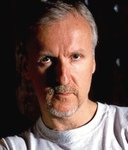 The director of Avatar (as well as countless other hit movies including The Terminator, True Lies and Titanic) has cited lucid dreams as being the inspiration for one of his famous movie scenes. Musing on Avatar, he said: "...I've kind of realized that what I was trying to do was create dream imagery, create a lucid dream state while you're watching the film," Cameron told Hollywood Today.
The director of Avatar (as well as countless other hit movies including The Terminator, True Lies and Titanic) has cited lucid dreams as being the inspiration for one of his famous movie scenes. Musing on Avatar, he said: "...I've kind of realized that what I was trying to do was create dream imagery, create a lucid dream state while you're watching the film," Cameron told Hollywood Today."I think that most people dream of flying at some point and when we're kids we dream of flying and I certainly did, and still have a lot of flying dreams and I thought that if I can connect to an audience, to a kind of collective unconscious in almost the Jungian sense, then it bypasses all the politics and all the bull***, and all the culturally specific stuff and all the language specific stuff around the world and connects us all to that kind of childhood, dreamlike state when the world was magical and infinite and scary and cool and you could soar. So that was the concept behind these scenes. And for me, personally, this was the part of the movie that I like the best, that I can watch over and over again."
Nikola Tesla
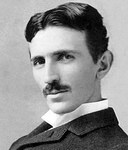 A genius inventor, Tesla is best known for his many revolutionary developments in the field of electromagnetism. His work formed the basis of modern-day commercial electricity using Alternating Current (AC) power systems. However, he also came up with many marvelous scientific claims, some of which remain unresolved to this day, nearly 70 years after his death.
A genius inventor, Tesla is best known for his many revolutionary developments in the field of electromagnetism. His work formed the basis of modern-day commercial electricity using Alternating Current (AC) power systems. However, he also came up with many marvelous scientific claims, some of which remain unresolved to this day, nearly 70 years after his death.Nikola Tesla possessed some extraordinary mental characteristics: an acute sense of hearing, visualization skills so vivid as to mimic reality, and bizarre eccentricities of habit and behavior. His visualizations enabled him to conduct realistic "dream experiments" while he was wide-awake in the lab. As a result, it is very tempting to suggest that, in his virtual laboratory, Tesla functioned one level above the lucid dream state. He had the ability, while being both physically and mentally awake, to run complex visualizations internally with all the realism and automaticity of a lucid dream world.
Chris Nolan
 As the director of original and gripping movies like Mementoand The Dark Knight, Chris Nolan mined his own lucid dreams to conceive Inception. "I wanted to do this for a very long time, it's something I've thought about off and on since I was about 16," he told The Los Angeles Times. "I wrote the first draft of this script seven or eight years ago, but it goes back much further, this idea of approaching dream and the dream life as another state of reality."
As the director of original and gripping movies like Mementoand The Dark Knight, Chris Nolan mined his own lucid dreams to conceive Inception. "I wanted to do this for a very long time, it's something I've thought about off and on since I was about 16," he told The Los Angeles Times. "I wrote the first draft of this script seven or eight years ago, but it goes back much further, this idea of approaching dream and the dream life as another state of reality."Intriguingly, Inception's main character, Dom Cobb, is played by Leonardo DiCaprio who also had lucid dreams before starring in the movie. The role of Cobb in the tangled dream-within-a-dream plot is to implant an idea in the subconscious mind of his victim. While the idea of shared dreaming currently resides in the land of science fiction, we can't escape the inherent truths of this movie: that the dream architects consciously manipulate the dreamscape with all the realism of waking life. Also like lucid dreams, however, the subconscious mind has its own agenda...
Salvador Dali
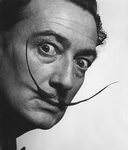 The famous surrealist painter, Salvador Dali, knew that lucid dreams were real long before they were scientifically verified in the lab. He used dream incubation techniques to pre-program his dreams, and produced many dream-inspired works, such as Dream Caused by the Flight of a Bee Around a Pomegranate a Second Before Awakening.
The famous surrealist painter, Salvador Dali, knew that lucid dreams were real long before they were scientifically verified in the lab. He used dream incubation techniques to pre-program his dreams, and produced many dream-inspired works, such as Dream Caused by the Flight of a Bee Around a Pomegranate a Second Before Awakening.Dali also pursued some forms of automatism as a way of inspiring new works straight from the unconscious. However, he eventually turned to a method he called "critical paranoia" - a state in which he could apparently cultivate delusion while maintaining sanity. His eccentric persona, which is what helped make him so famous, was even considered part of his art practice.
Stephen King
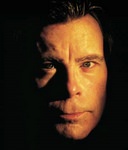 Does the king of horror have lucid dreams? There are a few clues that he has at least dabbled in the phenomenon. Stephen King writes about lucid dreaming in his 1995 novel,Insomnia, an extraordinary tale about an insomniac who begins to see brilliant auras - and then more disturbing hallucinations as his condition deteriorates.
Does the king of horror have lucid dreams? There are a few clues that he has at least dabbled in the phenomenon. Stephen King writes about lucid dreaming in his 1995 novel,Insomnia, an extraordinary tale about an insomniac who begins to see brilliant auras - and then more disturbing hallucinations as his condition deteriorates.Another clue that Stephen King may be a lucid dreamer is how he finds inspiration for his novels. In an interview with UK reporter Stan Nicholls on the inspiration for Misery, King said: "Like the ideas for some of my other novels, that came to me in a dream. In fact, it happened when I was on Concord, flying over here, to Brown's. I fell asleep on the plane, and dreamt about a woman who held a writer prisoner and killed him, skinned him, fed the remains to her pig and bound his novel in human skin. His skin, the writer's skin. I said to myself, 'I have to write this story.' Of course, the plot changed quite a bit in the telling. But I wrote the first forty or fifty pages right on the landing here, between the ground floor and the first floor of the hotel."
And in an interview with Naomi Epel, King said: "I've always used dreams the way you'd use mirrors to look at something you couldn't see head-on, the way that you use a mirror to look at your hair in the back. To me that's what dreams are supposed to do. I think that dreams are a way that people's minds illustrate the nature of their problems. Or maybe even illustrate the answers to their problems in symbolic language."
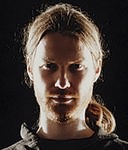 Richard D James
Richard D James
The electronic musician also known as Aphex Twin, Richard D James has publicly stated that the sounds from his album Selected Ambient Works Volume II were inspired by lucid dreams. Upon waking, he would attempt to re-create the sounds and record them. This album consists of lengthy ambient compositions which James has described as being "like standing in a power station on acid". James also claims to have natural synasthesia which contributes to his work.
Richard Linklater
 The director of the live-action rotoscoped movie, Waking Life, Richard Linklater is very familiar with the concept of lucid dreams. The movie is an intriguing philosophical jaunt into the world of dreaming and asks the question: "Are we sleep-walking through our waking state or wake-walking through our dreams?"
The director of the live-action rotoscoped movie, Waking Life, Richard Linklater is very familiar with the concept of lucid dreams. The movie is an intriguing philosophical jaunt into the world of dreaming and asks the question: "Are we sleep-walking through our waking state or wake-walking through our dreams?"The animation technique used in Waking Life requires animators to trace over live-action film movement, frame by frame, giving a curious dream-like appearance; real but not real. Rotoscoping was again used in Linklater's 2006 movie, A Scanner Darkly. This movie also pressures its protagonists to make a decision about the reality they are experiencing and to "wake up", to see their world for what it really is...
Thomas Edison
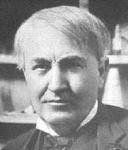 The prolific inventor Thomas Edison was hailed by many as a genius, but he had a famous saying: "Genius is 1% inspiration and 99% perspiration". His West Orange laboratory would often glow with electric light well into the night, as Edison and his team turned his dreams into inventions. He came up with the idea for the electric lamp in a dream one night, and he would often sleep in short bursts between working, writing down all the new ideas that came to him during REM sleep.
The prolific inventor Thomas Edison was hailed by many as a genius, but he had a famous saying: "Genius is 1% inspiration and 99% perspiration". His West Orange laboratory would often glow with electric light well into the night, as Edison and his team turned his dreams into inventions. He came up with the idea for the electric lamp in a dream one night, and he would often sleep in short bursts between working, writing down all the new ideas that came to him during REM sleep.While the term "lucid dreaming" did not even exist when Edison was alive, there have been many natural lucid dreamers for millennia, and Edison was likely one of them. His tendency to nap often would have left him wide open to conscious dreams, and his genius would not have overlooked the potential for drawing inspiration from such experiences. Indeed, his unusual sleep cycles may well have attributed to his prolific inventions. Thomas Edison held 1,093 US patents, many of which contributed to mass communication and telecoms of today, including a stock ticker, a battery for an electric car, electrical power, recorded music and motion pictures.
The Wachowski Brothers
 The creators of The Matrix, Larry and Andy Wachowski, are lucid dreamers who drew on this notion to create a virtual reality world in which we are all mentally enslaved, not recognizing that we are merely "dreaming". According to the official Matrix website, they drew on a whole host of philosophies to devise the plot, including Descartes, Mahayana Buddhism and the proverbial "brain in the vat" problem. The conundrum of The Matrix is: "How do I know that my reality is not an illusion?" This is the key to unlocking a dream and becoming consciously lucid.
The creators of The Matrix, Larry and Andy Wachowski, are lucid dreamers who drew on this notion to create a virtual reality world in which we are all mentally enslaved, not recognizing that we are merely "dreaming". According to the official Matrix website, they drew on a whole host of philosophies to devise the plot, including Descartes, Mahayana Buddhism and the proverbial "brain in the vat" problem. The conundrum of The Matrix is: "How do I know that my reality is not an illusion?" This is the key to unlocking a dream and becoming consciously lucid.The Wachowski brothers convey this and more in their sci-fi trilogy. They show us that the simple awareness that you are dreaming is not enough (Neo knew this from the start, yet he still wasn't able to control the Matrix yet). Instead, you must train your mind in your own lucid dojo before you can achieve full creative action. Like Neo, many newbie lucid dreamers have difficulty flying (or at least staying airborne) until they have been through their own personal training regime. We learn the mental perspective required to understand what makes flight possible in a non-physical dream world. Because of this insight, The Matrix is a veritable instruction manual for lucid dreamers.
Albert Einstein
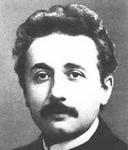 Was Einstein a lucid dreamer? Since conscious dreaming was not officially categorized nor popularized until after his death, we can only really speculate. However, it is clear that he mused on the concept of his internal dream world, and even used visualization techniques to arrive at some of his theories, including that of relativity. One of his most famous quotes deals with the condition of consciousness: "Reality is merely an illusion, albeit a very persistent one." This is typical of the conclusion that every lucid dreamer makes after his first legitimate lucid dream - how can we trust our real-world perception when our dreams so effortlessly mimics reality?
Was Einstein a lucid dreamer? Since conscious dreaming was not officially categorized nor popularized until after his death, we can only really speculate. However, it is clear that he mused on the concept of his internal dream world, and even used visualization techniques to arrive at some of his theories, including that of relativity. One of his most famous quotes deals with the condition of consciousness: "Reality is merely an illusion, albeit a very persistent one." This is typical of the conclusion that every lucid dreamer makes after his first legitimate lucid dream - how can we trust our real-world perception when our dreams so effortlessly mimics reality?Where did Einstein's genius come from? Post-mortem studies of his brain have revealed some interesting differences to the average brain. His parietal lobes were 15% wider than average - and area usually connected to spatial and visual cognition, as well as mathematics. He also had a rare pattern of ridges and grooves in his parietal lobes, thought to aid his visual thinking when it came to physics. And a third key difference is related to a knob found in the motor cortex, associated with musical ability (Einstein played the violin avidly since childhood). Ironically, Einstein's brain was actually smaller than average, which tells us his genius had more to do with the structure than size.
Interestingly, Einstein's Dreams by Alan Lightman is a novel which fictionalizes Einstein as a young scientist who is troubled by dreams as he works on his theory of relativity in 1905. Each dream involves a conception of time, though some scenarios may involve exaggerations of true phenomena related to relativity.
Subscribe to:
Posts (Atom)
